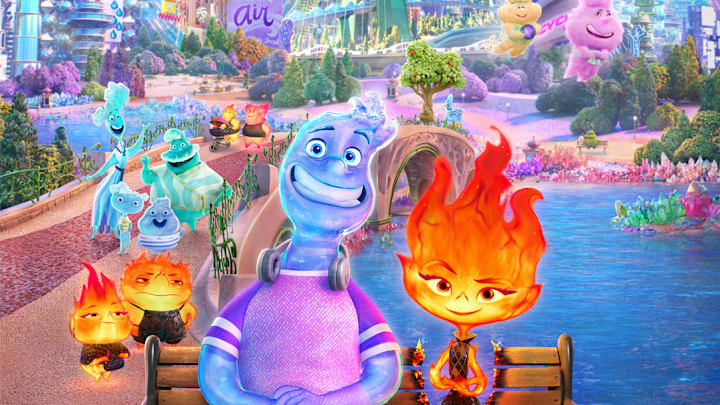After a slow start in theaters, Pixar's Elemental has finally crossed the $400 million mark at the global box office. It's an incredible feat for the original CG-animated movie, especially with its disappointing debut of $29.5 million domestically and $44.5 million globally.
For most studios, $400 million would be something to celebrate, but for Disney and Pixar, there are concerns that it may not even be enough to break even when taking into account production and marketing costs. Which begs the question, why are Disney films so expensive to make?
Why Pixar movies are so expensive to make?
To understand just how expensive Pixar movies have become to make, we should first look at some of the competition.
Sony's Spider-Man: Across the Spider-Verse has an estimated budget of $100 million, which is just slightly more than the budget for Into the Spider-Verse.
Universal's The Super Mario Bros. Movie -- an adaptation of Nintendo's popular video game IP that netted $1.3 billion globally -- only cost around $100 million to make.
When looking at the competition, how is it that these other studios manage to stay within the reasonable range of $100 million, while Pixar films often cost upwards of $200 million, which is the estimated cost of Pixar's Elemental?
Many assume it's due to the visual and technical complexity of Pixar's animation. There's no doubt that Elemental was a gorgeous film, but it's not like Across the Spider-Verse didn't have an appealing and also impressive art style. It's not like Teenage Mutant Ninja Turtles: Mutant Mayhem -- which only cost $70 million to make -- is an ugly movie.
According to Pixar president Jim Morris, animation is actually not the main driver for Pixar's production costs. Speaking to Variety in a wide-ranging interview following Elemental's recent box office milestone, Morris briefly addressed the cost of making Pixar movies.
"That’s a constant question. One of the ways you make these films for less money, and almost all of our competitors do this, is to do work offshore."
According to the Population Reference Bureau, "Offshoring is the movement of jobs and tasks from one country to another, usually from high-cost countries, such as the United States, to low-cost countries where wages are significantly lower."
Not only are the labor costs generally cheaper when offshoring, but you typically get fast turnaround time as well.
Morris went on to reveal that Pixar and Disney Animation are the only two studios that make animation movies in the United States "with all the artists under one roof." While this is clearly more expensive, he believes it's worth the price.
"We feel like having a colony of artists approach has differentiated our films. We hope to find a path to make that work. "
He also added that Elemental was particularly expensive because all of the characters have visual effects.
Accounting also plays a factor in the reported costs. Morris explained that Pixar's accounting includes certain line items in its budget that other studios exclude.
"So when we say a budget, that is everything it takes to run the whole company. Sometimes, the budgets [for other films] that get reported are physical production costs and don’t include the salaries of executives and things like that. Our budgets include all of that, so there’s some accounting context that gets lost. But that doesn’t mean they’re not expensive."
Morris' comments provide some important context when discussing movie budgets and the cost of Pixar films in particular. One advantage Disney has, however, are its other avenues of revenue. The movies the company puts out also help generate revenue across its theme parks business, toys and merchandise, and streaming. So for Pixar, it's not all about the box office.
In fact, Morris expects Elemental will ultimately be a profitable film for Disney in the end.
